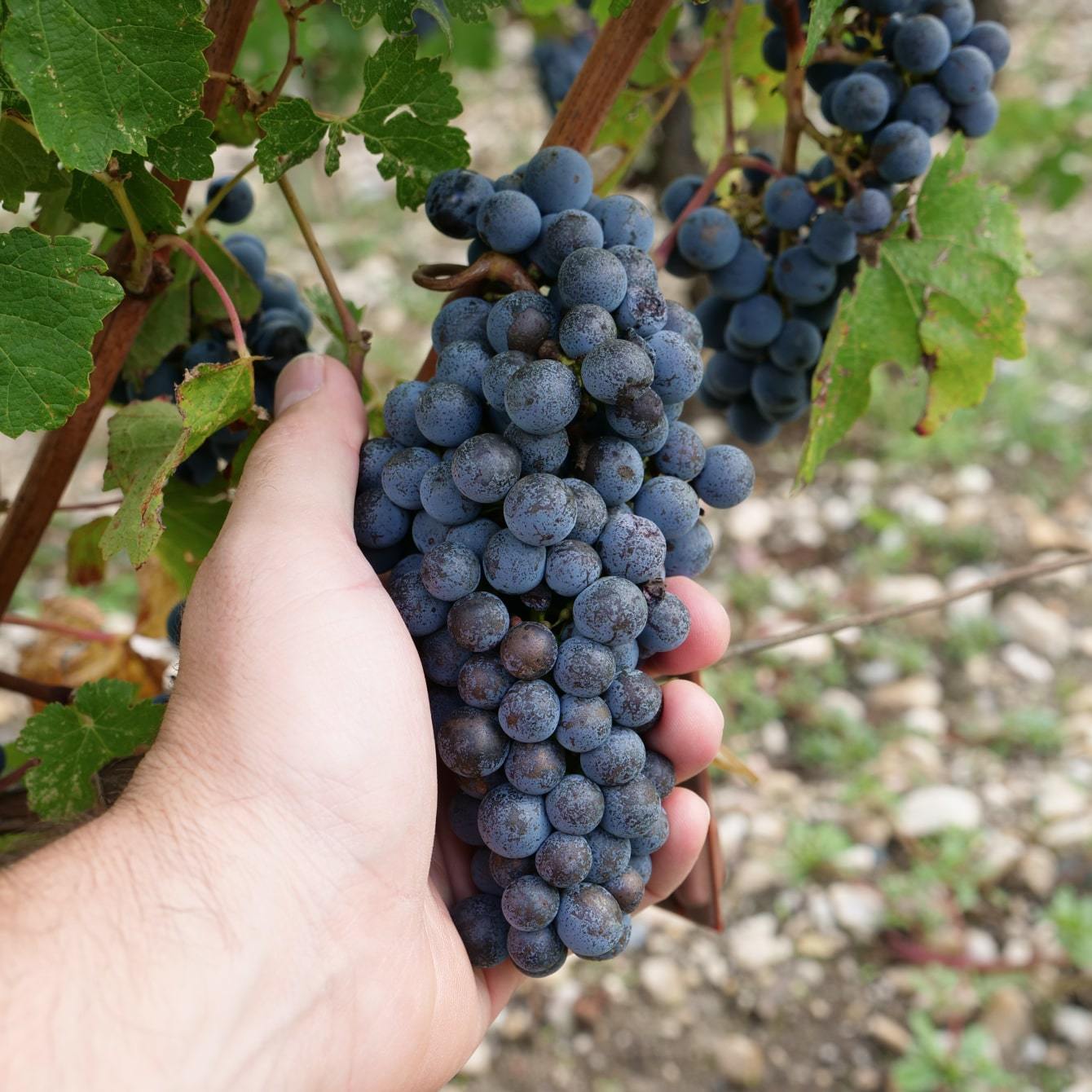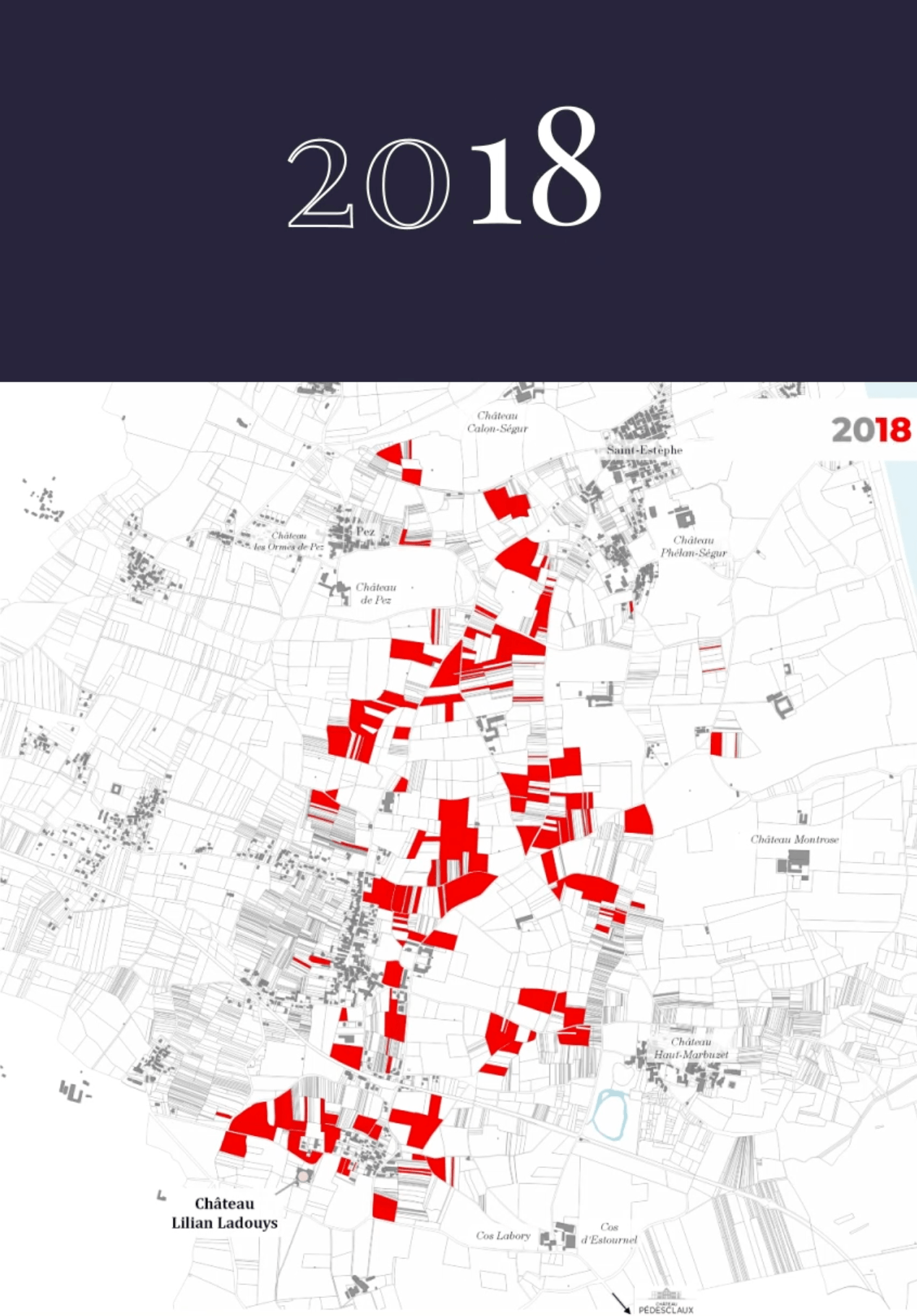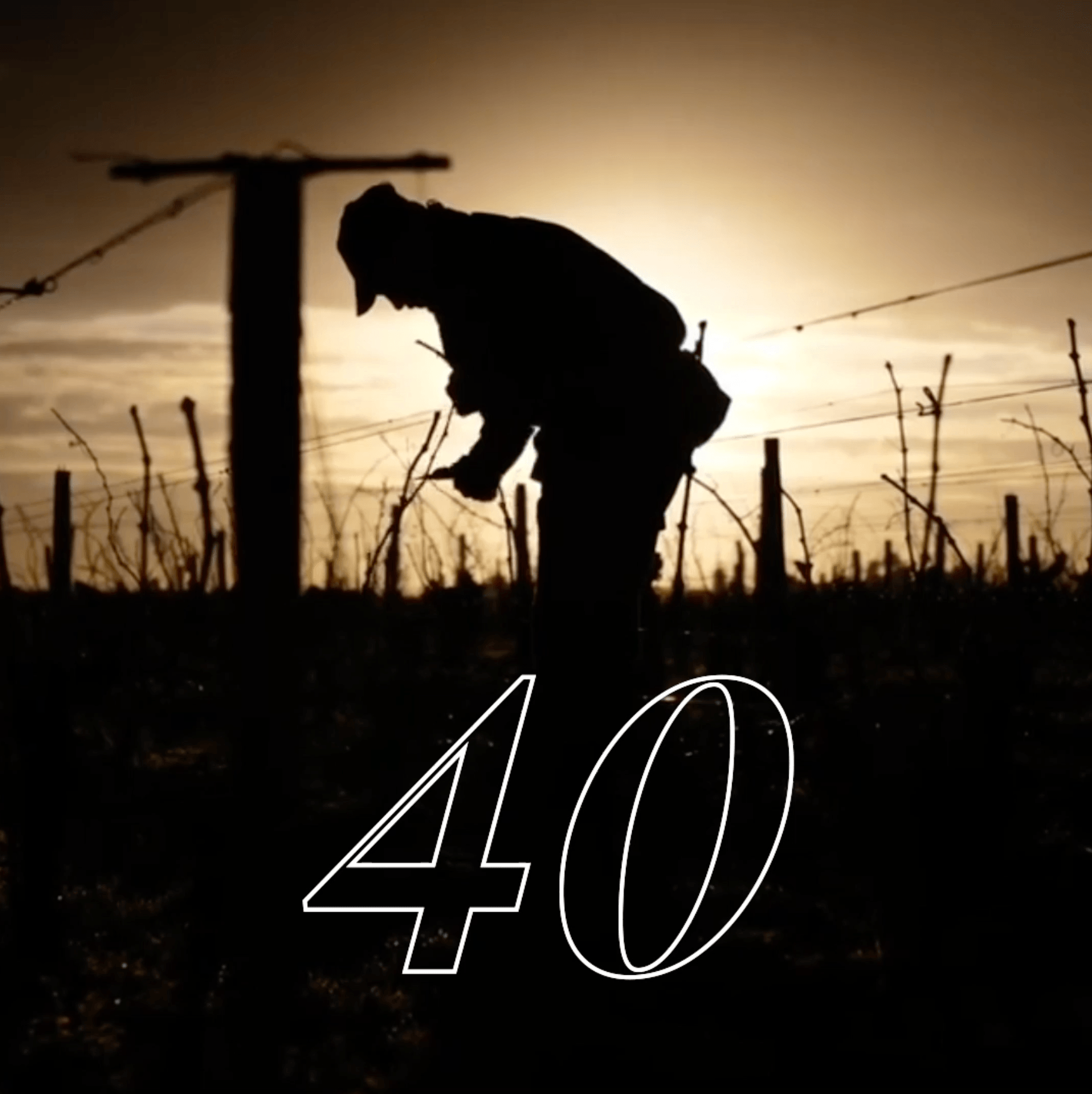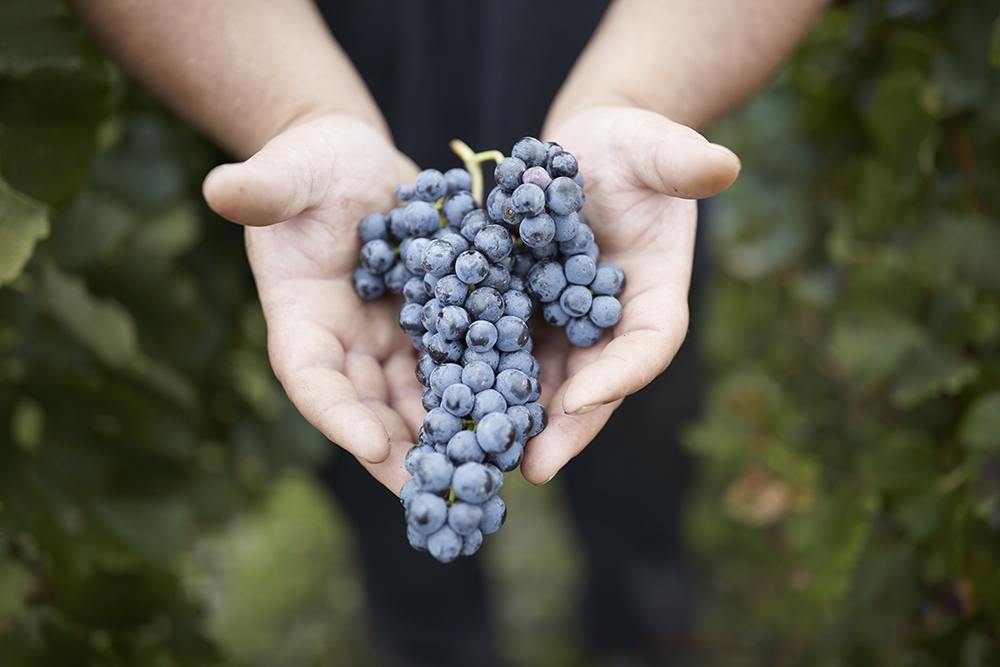In 2020, Château Lilian Ladouys has committed to converting the entirety of their vineyards to organic agriculture.
This year, the family has rubber-stamped this commitment: from 2020 onwards, they are officially in conversion to full organic practice.
Our vines are planted on over 80 hectares of the Cos plateau, along the axis that links Calon Ségur to Lilian Ladouys. They flourish on these soils – gravel topsoil overlaying clay and limestone – that are the appellation’s true geological treasure.
Since the Lorenzetti family bought the property, we have engaged in a massive programme of land consolidation. This has enabled us to create coherent clusters of plots, planted with carefully chosen grape varieties, in the manner of the 19th-century vineyards, and so to recreate the ideal conditions for these vineyards to achieve their full potential.



